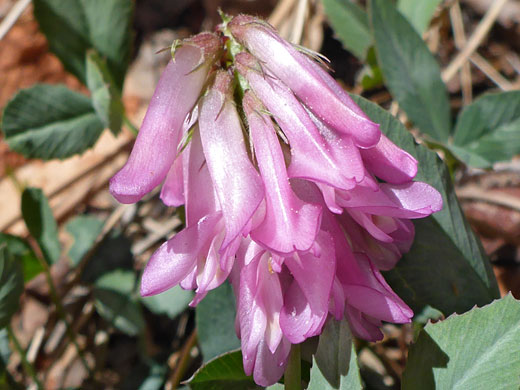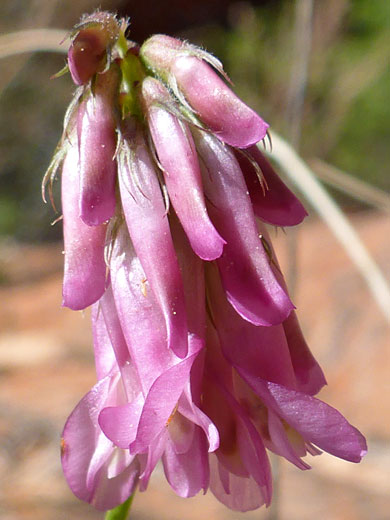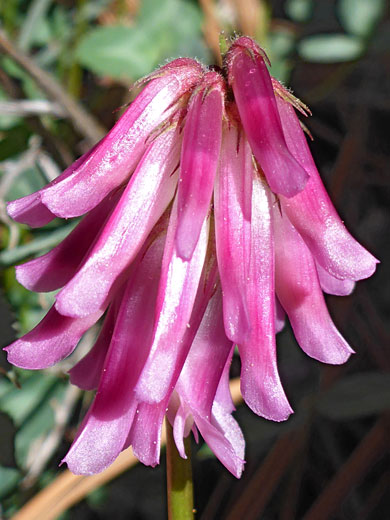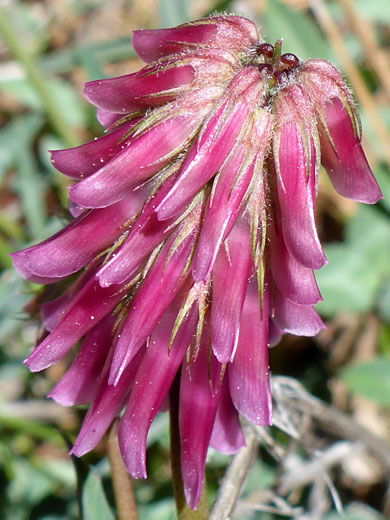Common name:
King's clover
Family:
Scientific name:
Trifolium kingii
Synonym:
Trifolium macilentum
Main flower color:
Range:
Southwest Colorado, south Utah, southeast Nevada and far northwest Arizona
Height:
Up to 16 inches
Habitat:
Woodland, streamsides, meadows, from 6,000 to 11,000 feet
Leaves:
Palmate; three toothed, hairless, ovate leaflets, up to 3 inches long
Season:
May to July
Trifolium kingii occurs in scattered locations across four states; it is most common in southwest Utah, around Zion National Park and mountains to the north, and in southwest Colorado. Leaves are hairless, grayish-green, up to 3 times as long as wide, with prominent veins and sharp edge teeth. Basal leaves tend to have no teeth. Leaves have narrow, pointed, lance-shaped stipules, up to an inch long.
Flowers are produced in a dense cluster, of between 20 and 35, angled downwards (usually) or sideways. Flowers have a bell-shaped calyx, hairy or hairless, divided to about a third of its length into five narrow, equally-shaped lobes. Corollas are narrow, tubular in appearance, around 0.7 inches long, purple-pink, or sometimes nearly white.
Flowers are produced in a dense cluster, of between 20 and 35, angled downwards (usually) or sideways. Flowers have a bell-shaped calyx, hairy or hairless, divided to about a third of its length into five narrow, equally-shaped lobes. Corollas are narrow, tubular in appearance, around 0.7 inches long, purple-pink, or sometimes nearly white.
All Contents © Copyright The American Southwest | Comments and Questions | Contribute | Site Map






